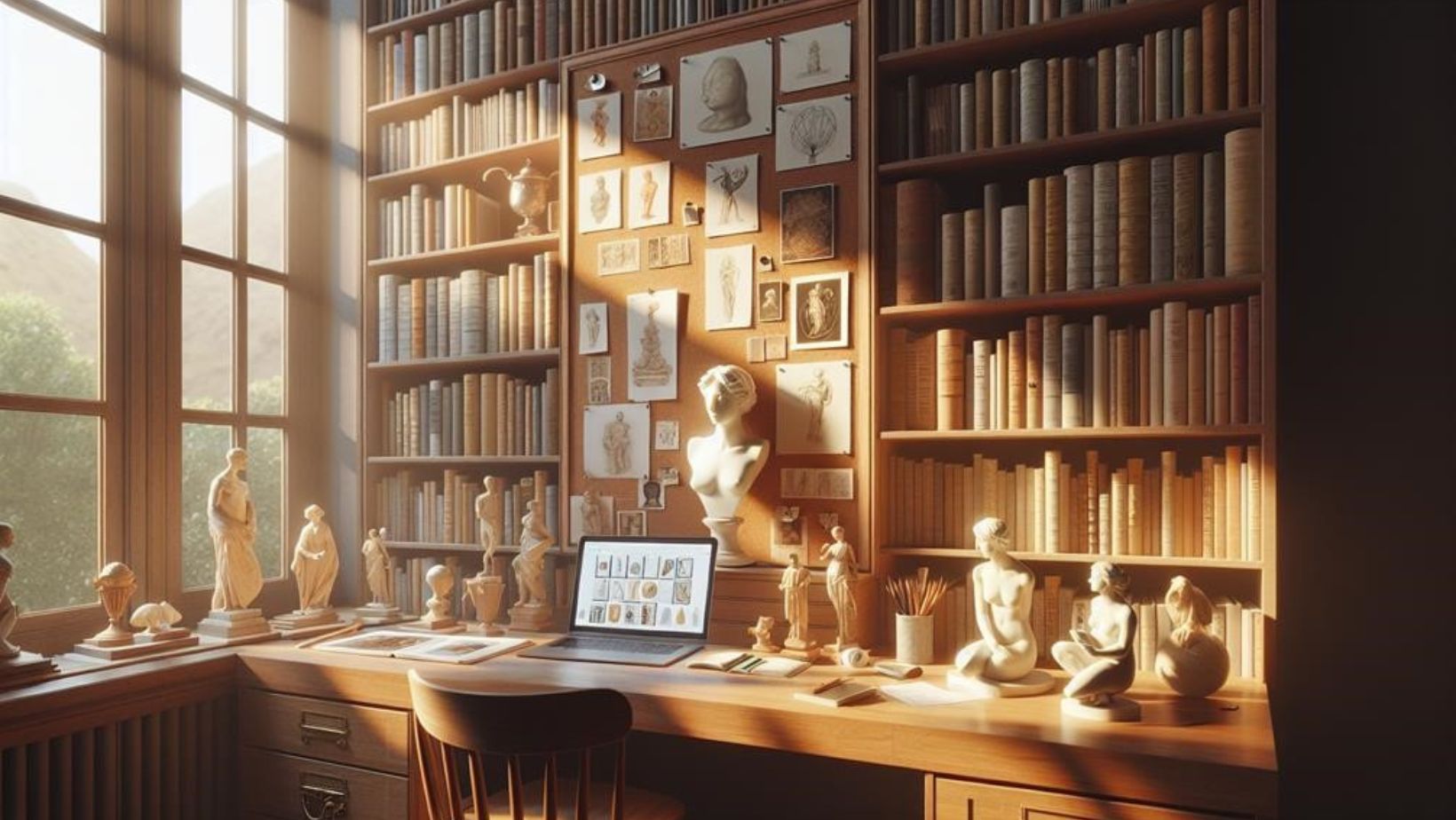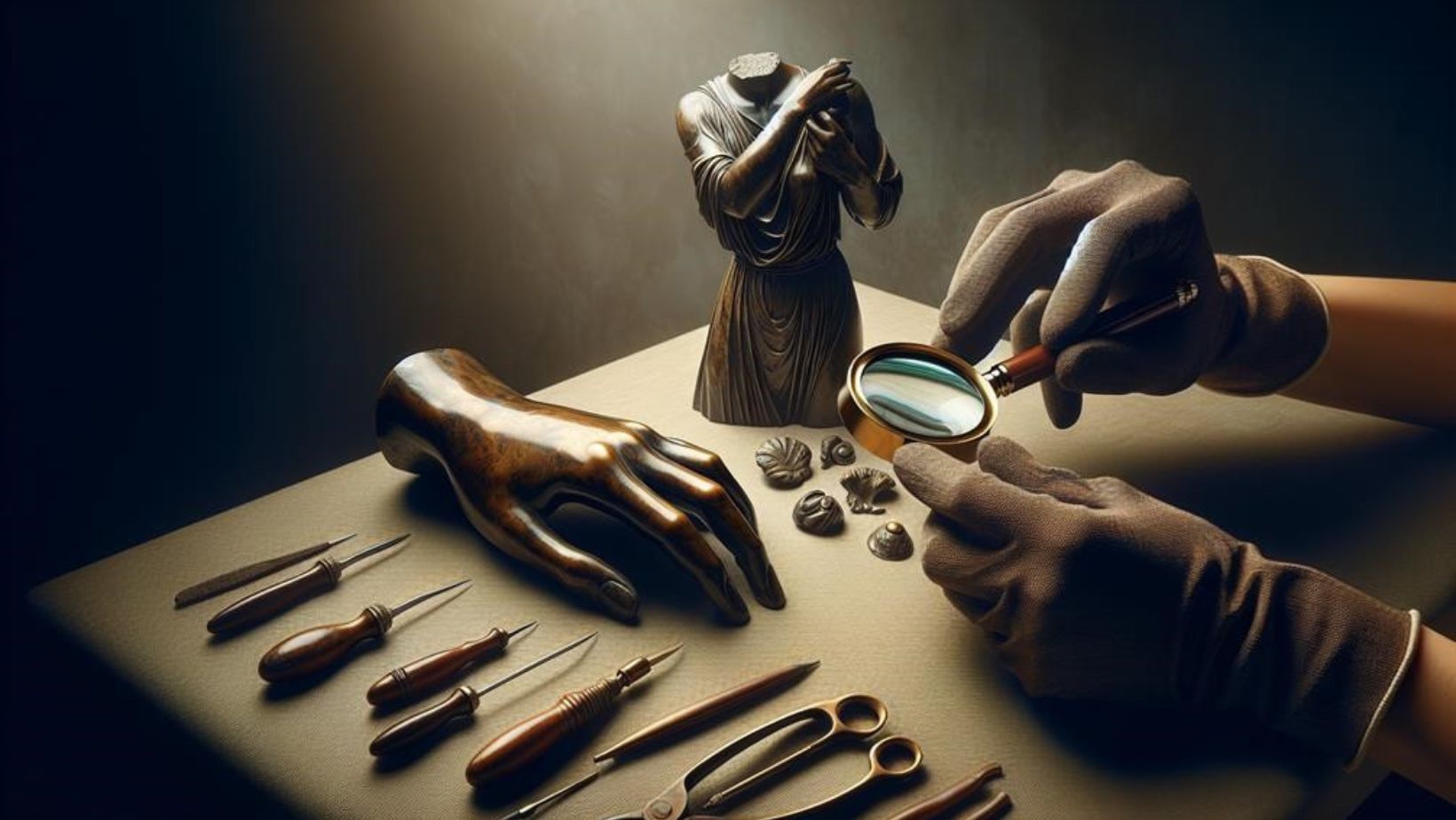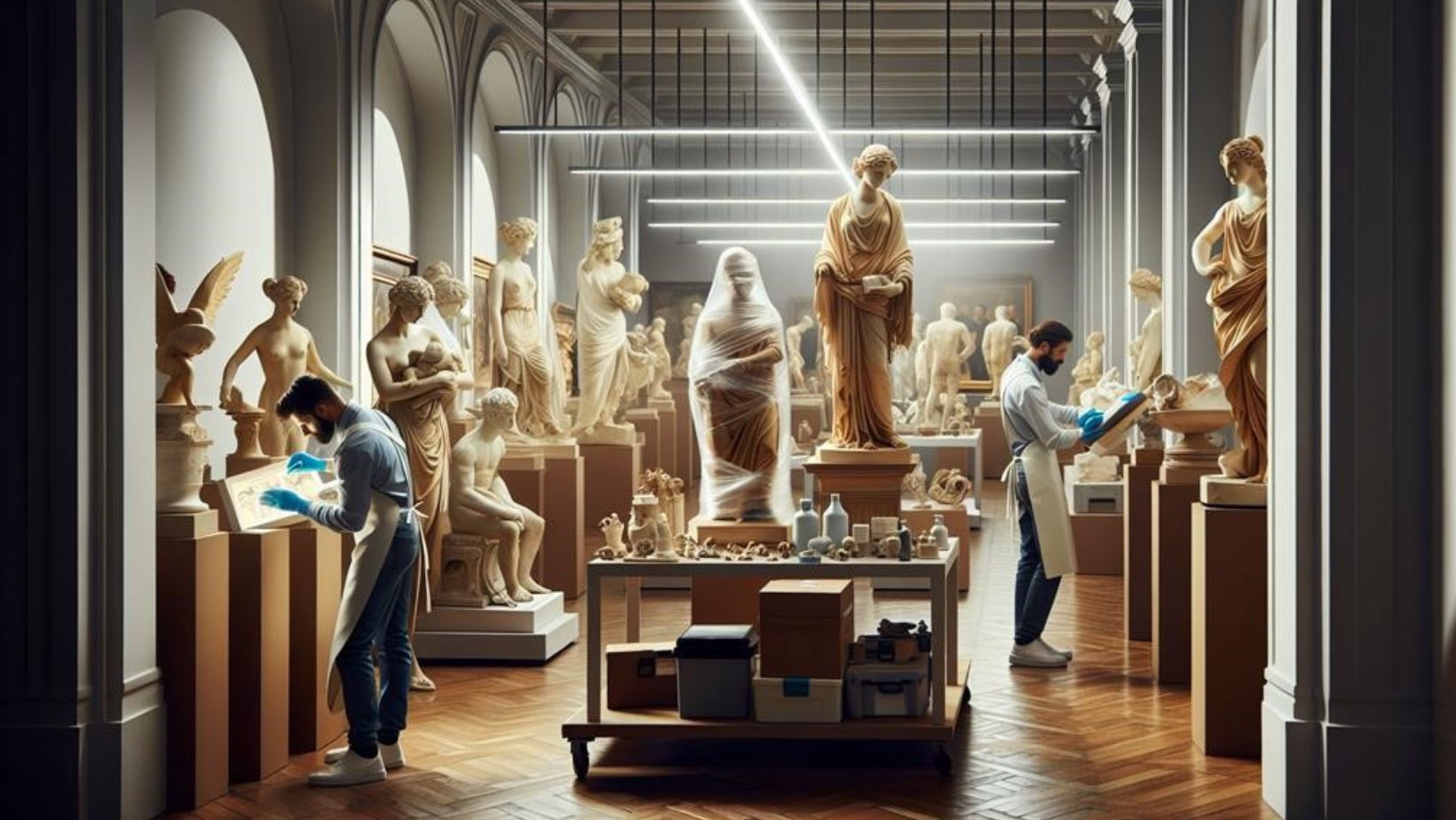Imagine sculpting a block of marble; each strategic chisel strike reveals the masterpiece within. Building a sculpture collection for investment follows a similar process—careful, deliberate, and informed. You need a clear grasp of the market and an understanding of key artists, materials, and provenance. Setting financial goals and a realistic budget is essential, much like sketching the outline before starting your sculpture. But how do you navigate these facets while ensuring authenticity and market value? Let’s explore the nuances that can elevate your collection from mere decor to a substantial asset.
Understanding the Sculpture Market
To build a profitable sculpture collection, you need to first grasp the intricacies of the sculpture market. Start by researching key artists, historical trends, and current market demands. Recognize that the sculpture market isn’t as liquid as other art forms, so understanding the nuances is essential.
Focus on the provenance of each piece. Provenance, or the documented history of a sculpture, greatly impacts its value and desirability. A well-documented piece with a clear ownership history can command higher prices and provide a safer investment.
Pay attention to the materials used. Bronze, marble, and other durable materials typically hold value better than less durable or less traditional materials. The craftsmanship and condition of the sculpture also play a considerable role in its market value. Even minor damage can drastically reduce a piece’s worth.
Stay informed about market trends by following auction results and gallery exhibitions. Networking with other collectors, attending art fairs, and subscribing to art market analysis can provide valuable insights. This knowledge helps you identify undervalued pieces and avoid overpaying for overhyped ones.
In this market, due diligence is your best ally. Always verify the authenticity and condition of a piece before making a purchase.
Setting Your Investment Goals
With a firm understanding of the sculpture market, it’s now time to define your investment goals to guide your collection strategy effectively.
Start by evaluating your financial objectives. Are you looking for short-term gains or long-term appreciation? This will determine the types of sculptures you should consider, as well as the level of risk you’re willing to take on.
Next, establish your budget. Decide how much you’re prepared to invest initially and how much you can allocate for ongoing acquisitions. Be realistic about the costs involved, including insurance, storage, and maintenance.

Determine the level of diversification you want in your collection. Diversification can mitigate risk by spreading your investment across different artists, styles, and periods. Consider how much weight you want to give to emerging artists versus established names.
Set a timeline for your investment. Are you planning to hold onto your collection for decades, or are you aiming for a quicker turnaround? This will affect your buying and selling strategies.
Researching Artists and Styles
Diving into the world of sculpture investment, you’ll want to start by thoroughly researching artists and styles that align with your financial goals and risk tolerance.
Begin by identifying established artists whose works have consistently been valued. Auction records, gallery representations, and critical reviews can provide valuable insights. Pay attention to emerging artists as well; they offer high growth potential but come with increased risk.
Next, analyze styles and movements that have sustained market interest. Contemporary, abstract, and classical sculptures each have distinct market dynamics. Contemporary sculptures often attract higher prices due to current trends, but they can be volatile. Classical pieces provide stability but may offer slower appreciation. Abstract works might appeal to niche collectors, leading to varied demand.
Market data is essential. Use databases, industry reports, and expert analyses to gauge trends. Compare prices from different periods to assess market stability and growth potential. Don’t overlook the importance of networking with art dealers, attending exhibitions, and joining art collector forums.
Ultimately, your research should aim to balance potential gains with acceptable risks, ensuring a well-rounded and financially sound sculpture collection. This approach increases your chances of making informed, profitable investments.
Identifying Authentic Sculptures
Authenticating sculptures is essential for ensuring the legitimacy and value of your investment. To start, always aim to buy pieces with verifiable provenance. Check the sculpture’s history, including previous ownership, exhibition history, and any related documentation. Provenance adds credibility and can greatly raise the artwork’s market value.
Next, consult with recognized experts or appraisers. Their trained eyes can detect inconsistencies or attributes that you might miss. They provide critical insight into materials, techniques, and stylistic elements indicative of specific artists or periods. Given the prevalence of forgeries, expert validation is an invaluable safeguard.
Utilize technological tools and scientific methods. Techniques like X-ray fluorescence (XRF) and thermoluminescence dating can authenticate materials and age, providing another layer of assurance. These methods are particularly useful for ancient or highly valuable modern sculptures where visual inspection alone isn’t enough.
Evaluating Sculpture Condition
Evaluating the condition of a sculpture is essential for understanding its true market value and potential investment risks.

Start by examining the sculpture for any physical damage, such as cracks, chips, or missing parts. Even minor imperfections can greatly affect a piece’s market value and long-term appreciation. Use a magnifying glass to inspect detailed areas and verify that repairs or restorations haven’t compromised the integrity of the work.
Next, consider the materials used. Bronze, marble, and other durable materials tend to hold up better over time compared to more fragile ones like terracotta or plaster. However, even durable materials can suffer from issues like patina discoloration or oxidation, which might require professional restoration.
Don’t forget to assess the sculpture’s provenance. Pieces with well-documented histories generally fare better in the market. Look for any paperwork or previous auction records that can attest to its authenticity and condition over the years.
Lastly, think about the environmental factors such as light, humidity, and temperature that may have impacted the sculpture. Proper storage and display conditions can preserve its state and maintain its value, reducing your investment risk.
Always seek expert opinions when in doubt.
Navigating Art Galleries and Auctions
After thoroughly evaluating a sculpture’s condition, the next step is to strategically navigate art galleries and auctions to acquire high-quality pieces. This step involves understanding the market dynamics, recognizing reputable sources, and being aware of potential risks.
First, research the galleries and auction houses. Not all are created equal, and their reputations can vary. Opt for those known for their expertise in sculpture and their history of successful sales.
Second, attend multiple events to get a feel for the market. This helps you gauge current trends and pricing. Here’s a quick guide to follow:
1. Previews and Catalogs: Study auction catalogs and gallery previews. They offer invaluable insights into the pieces’ provenance and market value.
2. Networking: Build relationships with gallery owners, auctioneers, and other collectors. Networking can provide insider information and early access to desirable pieces.
3. Due Diligence: Verify the authenticity and condition of sculptures independently. Don’t solely rely on the seller’s word.
Lastly, be mindful of market volatility and trends. Prices can fluctuate, so it’s essential to stay informed and flexible. By following these steps, you’ll position yourself to make informed and profitable acquisitions.
Negotiating Prices and Deals
When negotiating prices and deals, it’s vital to leverage your market knowledge and timing to secure the best value for your investment. Understand the current market trends and recent sales of similar sculptures to gauge a fair price. Use this data to make informed offers and counteroffers. Timing is significant; purchasing during off-peak seasons or when the market is less competitive can result in better deals.

Approach negotiations with a clear budget in mind. Be transparent about your maximum offer, but also remain flexible to accommodate slight adjustments. Building rapport with sellers can lead to favorable terms. Establishing a positive relationship might grant you access to exclusive deals or early notifications about upcoming pieces.
Be aware of potential risks. Overpaying due to a lack of market insight or emotional attachment can undermine your investment. Stay detached and objective. Additionally, hidden costs such as transportation, insurance, and maintenance should be considered when negotiating. Factor these into your final offer to avoid unexpected financial strain.
Lastly, don’t rush. Take your time to assess each opportunity carefully. Patience often leads to more strategic decisions and better long-term returns on your sculpture collection investment.
Ensuring Proper Documentation
Securing a favorable deal is only part of the equation; you must also guarantee that all documentation for your sculpture collection is thorough and accurate to protect your investment. Proper documentation not only verifies authenticity but also aids in appraising the piece’s value and confirming its insurability. Here’s how to ascertain your records are in top shape:
1. Provenance Records: Obtain a detailed history of ownership. This includes previous owners, sales records, and any exhibitions where the sculpture was displayed. Provenance helps establish the sculpture’s legitimacy and market value.
2. Certificates of Authenticity: Verify you receive a certificate from the artist, gallery, or a recognized authority. This document certifies the sculpture is genuine, which is essential for future resale and insurance claims.
3. Condition Reports: Get a thorough condition report from a qualified conservator. This document details the sculpture’s current state, noting any damage or restorations. It’s important to understand potential future costs and risks associated with the piece.
Preserving and Restoring Sculptures
To maximize the longevity and value of your sculpture collection, you must implement rigorous preservation and restoration practices. Start by confirming that your sculptures are stored in a controlled environment where temperature, humidity, and light exposure are meticulously monitored.The DreamLab UAE offers specialized services and innovative solutions for creating such environments, ensuring that these factors do not cause significant damage over time if neglected.
Regular cleaning is essential, but always use appropriate materials and techniques to avoid unintentional harm. Consulting a professional conservator for this task can save you from costly mistakes.

When it comes to restoration, identify any wear or damage early. Quick intervention can prevent minor issues from escalating into major, value-diminishing problems. Utilize expert restorers who specialize in the material of your sculpture, whether it’s marble, bronze, or another medium. Their expertise guarantees that the restoration process respects the original artistry, maintaining both aesthetic and financial value.
Additionally, keep detailed records of all preservation and restoration efforts. Documentation not only aids in future maintenance but also adds to the provenance, making your collection more attractive to potential buyers.
Monitoring Market Trends
Maintaining your sculptures’ physical integrity is only part of the equation; staying informed about market trends is equally important to secure your collection’s financial appreciation. Markets fluctuate, and being aware of these changes can help you make informed decisions. Here’s how you can stay ahead:
1. Track Auction Results: Regularly review auction house results to understand what types of sculptures are currently in demand. This data provides insights into pricing trends and helps you identify emerging artists whose works are appreciated.
2. Follow Art Market Reports: Industry reports often highlight shifts in collector preferences and market dynamics. Subscribe to credible art market analysts and publications to stay updated on broader economic factors influencing the art market.
3. Engage with Art Communities: Join forums, attend art fairs, and network with other collectors and dealers. These interactions can offer firsthand insights and peer opinions that are often invaluable.
Monitoring market trends isn’t just about gathering information; it’s about interpreting data to minimize risks and maximize returns. Staying proactive ensures you’re not caught off guard by sudden market shifts, making your collection not just a passion but a savvy investment.
Conclusion
In the art of collecting, your success hinges on a blend of knowledge, strategy, and vigilance. By setting clear goals, researching meticulously, and ensuring authenticity, you’ll navigate the market like a seasoned sailor charting unpredictable seas.
Don’t overlook the importance of condition and documentation; these are your lifelines. Stay engaged with trends and communities to keep your investment buoyant.
Investing in sculptures isn’t just about the art—it’s about making informed, strategic choices.
















